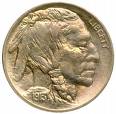
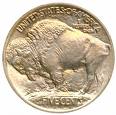
The Buffalo nickel features one of the more ironic designs in US coin history. The coins depict an American Indian Chief on the obverse and a “buffalo” (actually an American Bison) on the reverse. Two decades before the coins were introduced, the US government was promoting the mass killings of both American Indians and buffalo.
The original Buffalo nickel was designed by James Earle Fraser and was first minted in 1913.
James Earle Fraser

James Earle Fraser was born in Minnesota, in 1876. He moved to South Dakota, where his father worked for the railroad. His earliest memories of American Indians was that they were friendly toward him and his family. As a result, he was deeply disturbed by their plight of being forcibly driven across the country. In 1890, the US army massacred 300 men, women, and children camped at Wounded Knee, South Dakota, and American Indians were driven from the western plains. Their plight is described in Dee Brown's book, Bury My Heart at Wounded Knee.
In 1894, he created the sculpture “The End of the Trail,” which he hoped would be cast in bronze and placed in San Francisco. The casting idea, however was scrapped due to the onset of World War One.
The obverse buffalo nickel design

Fraser moved to New York and worked as an assistant to Augustus St. Gaudens. Fraser produced a design for a new nickel coin featuring an American Indian Portrait. The portrait was a composite of three different people: Chief Iron Tail, a Sioux, Chief Two Moons, a Cheyenne, and a third model whose name Fraser was unable to remember. Other coins, such as the Indian Head cent, introduced in 1856, and the Ten Dollar Indian Head Gold Coin of St. Gaudens actually depicted Caucasian women wearing Indian war bonnets.
The reverse buffalo nickel design

For the reverse of the coin, Fraser used an American bison modeled after “Black Diamond” from the New York Zoological Garden. In the early 1800’s there were millions of bison in the United States. Plains Indians relied on the bison for meat, leather, sinew for bows, grease, dried dung for fires, and glue from the boiled hooves.
The US government encouraged the hunting of bison in order to deprive the plains Indians of their primary food source so they would be forced to starve or leave. In 1874, President Ulysses Grant refused to sign a bill to protect the bison.
Laura Gardin Fraser

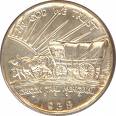
The first buffalo nickel was minted in 1913. In the same year, James Earl Fraser married Laura Gardin. James and Laura collaborated on a commemorative Oregon Trail half dollar introduced in 1926. Laura Gardin Fraser designed several commemorative coins and medals including the Grant half dollar and gold dollar (1922), and the Vancouver Centennial half dollar (1925).
Collecting buffalo nickels
The buffalo nickel was minted from 1913 until 1938, when it was replaced with the Jefferson design. As originally designed in 1913, the buffalo nickel had two major design flaws. First, the words “five cents” appeared on raised ground underneath the buffalo, where they quickly wore off. This was quickly remedied by a second variety where the words five cents were recessed. The date on the obverse was also in a high area on the coin where it quickly wore off. This was never remedied. As a result, large numbers of buffalo nickels now exist with their dates completely worn off. It is possible to restore dates of buffalo nickels with Ferric Chloride. Coins with restored dates are worth considerably less than coins where the dates are naturally readable.
Key dates for buffalo nickels
Although the 1926S had the lowest mintage,other dates are scarcer due to fewer of them surviving without the dates being worn off. The most valuable dates are the second variety of 1913-D and 1913-S, along with 1914-D, 1915-S, and 1921-S. Many buffalo nickels were softly struck. Uncirculated, well struck coins, especially from San Franciso are scarce.
Three legged buffalo nickels
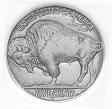
The most famous error variety of the buffalo nickel is the "three-legged" buffalo nickels from 1937-D and 1936-D. In both cases, part of one of the bison's front legs is missing due to a defective die.
More information on buffalo nickels can be found in David Lange's book, The Complete Guide to Buffalo NickelsAn Encore for the buffalo nickel design
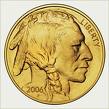
The same design as used on the buffalo nickel was later used on a one dollar buffalo commemorative coin of 2001 and the buffalo gold bullion coins.